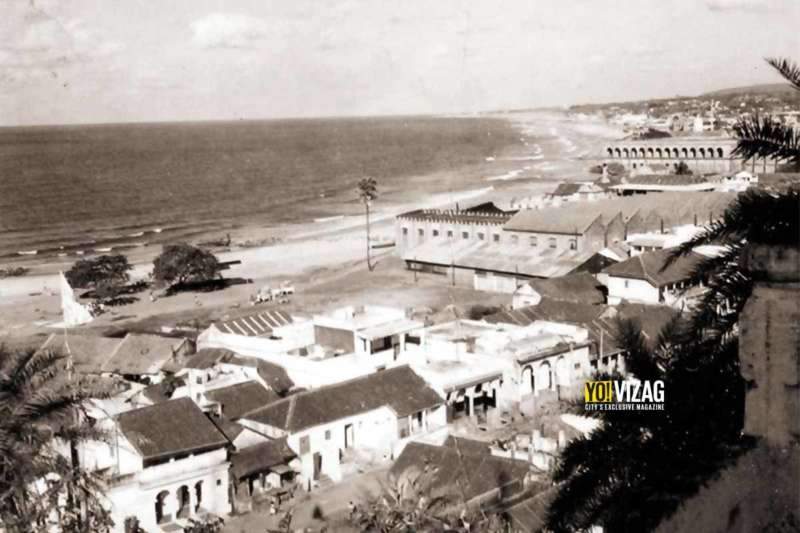

Visakhapatnam is blessed with a natural port that made the city the prime centre of focus for trade and commerce. The diminishing influence of the Indian emperors and the political scenario in the region paved the way for the Europeans to take over the control of Vizag. Dutch, French, and British’s East India Company merchants used the port for trading ivory, tobacco, muslin, textile products, paddy, coal, iron ore, and other products available in the region. The economic importance of Visakhapatnam made it a military base for the forces used to protect the trade and commercial activities of the port.
In the middle of the 17th century, the East India Company appeared to have settled at Vizagapatnam. The British named it Vizagapatnam and made it one of the important and strategic power centers. British built its settlement in Waltair and fortified the area by constructing a wall around the settlements to protect them and their goods against the destructions caused by the thieves. The East India Company was closed in 1689 on account of a war between Aurangazeb and the Company. In 1690, the company restarted its activities with permission from the Moghul emperors. In 1735, Dutch Colony was established near Vizagapatam. Mr. John Stratton’s initiations during 1741-42 resulted in the construction of Benyon’s battery to accommodate the European soldiers and ammunition. In 1744, the Maratha panic upshots the completion of battery on Dolphin’s Nose. The map of 1758 has the details of the constructions made at that time. It is quite surprising to see a river flowing through Vizag. As per the map, Vizag is a peninsula that was surrounded by water on all three sides. Unfortunately, the river was swallowed by the destructive developmental attitude of the planners of the city.
The French army marched into British strongholds and captured Vizag in 1753 and Bussy, the French general reached Vizagapatnam in 1757 to strengthen the French control
over the city. In 1758, King Ananda Raj took over the Vizagapatnam Settlement which was in French possession. He then wrote to the Company at Madras and Calcutta for
reinforcements to enable him to drive the French out of the Circars. The territory of the Northern Circars, of which Vizag was a part, ceded to the East India Company by the Nizam of Hyderabad during 1765. Following this, a British colony was established.
The Vizagapatnam Sepoy Mutiny of 1780 is the first sepoy mutiny against British east India company that occurred in the history of India. In 1794 Narayanababau was received at the Chiefship of Vizagapatnam after the death of king Viziarama Raju in the battle of Padmanabham between Raja’s forces and British forces. The Provincial Council was abolished in 1794. The permanent settlement of 1802 divided the Haveli lands into a number of small proprietary estates. Waltair and Allipuram, the two wards in Vizagapatnam, form part of the estates carved out at this time. In 1803 the district was made one collectorate and placed under Hon’ble L.G. Keith Murray. The Battle of Vizagapatam in 1804 demolished the French rule in this region. Later under the Madras Presidency,
Visakhapatnam merged as a part of the Northern Circars that also included parts of coastal Andhra Pradesh and Orissa. The place was renamed and came to be known as Waltair by British India. St Aloysius Anglo Indian High School (SAS) was established in the year 1847 in Visakhapatnam, Andhra Pradesh. In 1857 Maharaja Viziarama Gajapati 3 established an English medium school parallel to Madras, Kolkata, and Mumbai. Vizagapatnam continued to have a cantonment till the year 1882-83. Many of the bungalows in Waltair, and the two roads – one leading to the beach and the other to the town – were built for military purposes.
Monsoon has arrived early this year, cooling down temperatures and higher humidity. While travelling to…
Tensions remain high at the Rashtriya Ispat Nigam Limited (RINL) as thousands of contract workers…
Romance and drama set in a regal landscape take centre stage in The Royals series.…
Indian Institute of Technology (IIT) Bhubaneswar is hosting an Open House in Visakhapatnam for prospective…
The State Government is working on introducing and implementing a new policy, targeting the AVGC-XR…
The President of India, Droupadi Murmu, is set to visit Visakhapatnam on June 10 to…
Leave a Comment